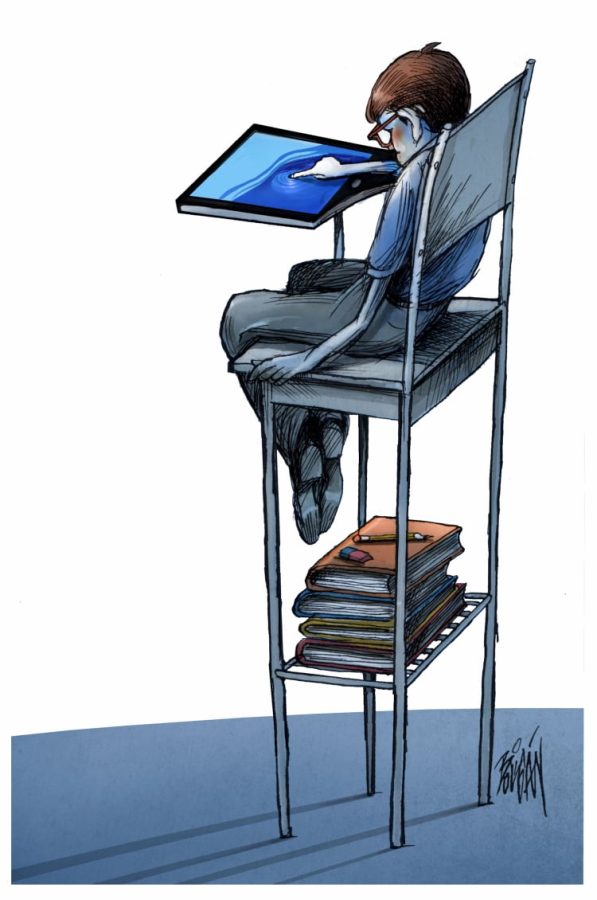Paper VS. Online Tests
Feb 1, 2023
Since 2020 the famously known “COVID year”, schools have been slowly moving toward online school work rather than paper. The revision has brought many benefits, but there are always two sides to every story.
Math teacher Brandon Shellenberger has reasoning behind his paper test.
“Mostly because Geometry is a very visual class… and it’s easier to write it down, so you can visualize it that way,” Shellenberger said.
When it comes to his class he explained it can be beneficial to use both.
“It kinda depends because sometimes you can mess around with things online for geometry, other times it is best to use paper source because you can fill in what you need to.”
A problem Shellenberger has with using only paper for his tests is that “There is not very much creativity.”
While he only uses paper tests, Shellenberger expressed how he thinks it is important to be familiar with both online and paper.
“We have to understand and know the technology and the different technologies that are used, but also in the real world you’re going to have paper and you’re going to have to deal with all the paper files and storing it and reading it that way,” Shellenberger said.
When asked which type of test he would rather do, Shellenberger was impartial.
“I would rather do fifty-fifty. I mean I like tech and I like incorporating it and using it, but there is also that paper side where I need to fill in and actually write out what I’m doing or I’m going to lose track.” Shellenberger said.
An article by Edutopia interviewed Ben Backes, a researcher at the American Institutes for Research, “The same student taking the same test will get a different result whether they’re taking it online or on paper.” He called this an “online penalty.”
They studied students taking the PARCC, an exam used to measure student progress, and Common Core standards and found that the students taking the test online did worse than the students completing the test on paper. “Performing as though they had lost the equivalent of 3.4 months of learning in math and 7.3 months of learning in ELA.”
Some teachers use primarily online testing and it has been beneficial for them in their classrooms.
“One of the original reasons for online testing was the ease of grading, less chance of me making a mistake.” Robert Barnhill, science teacher said. “In this day and age, we have more technology than we did when I went to high school. I think it’s good to know and be familiar with technology.”
Online testing, however, creates a limitation with the variety of question types.
“I can’t have as many critical thinking questions,” Barnhill said. “It has to be more along the lines of matching and multiple choice.”
While Barnhill had many positive things to say about online testing, he did explain online testing came with the problem of cheating.
“I am concerned about how quickly they’re able to switch through tabs, and my concern falls with cheating,” Barnhill said.
Due to this problem he is now transitioning toward paper tests for this semester. He is also working toward hybrid tests for the future.
Schools transitioning to online testing also has a positive effect on the environment.
An article by Rider News interviewed a senior environmental science major Alina Bardaji.
“Digital learning can be a strong force in environmentalism because it saves a monumental amount of paper, from exams to in-class assignment sheets. Although it has its challenges, if utilized well, it could help our planet more than we think,” Bardaji said.
The article goes on to say that an estimated 18 million trees are destroyed each year, and if we continue at this rate “the Earth’s rainforests will be destroyed in less than 100 years.”
There are disadvantages and advantages to both paper and online testing. At the end of the day, all that matters is the teachers are doing what they think is best for them and their students.






